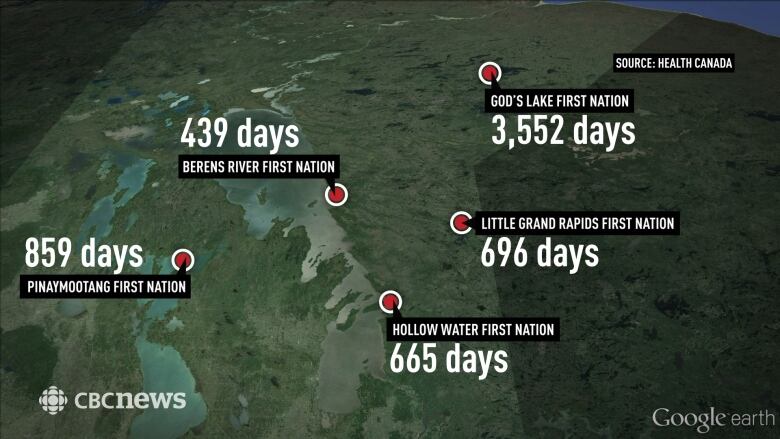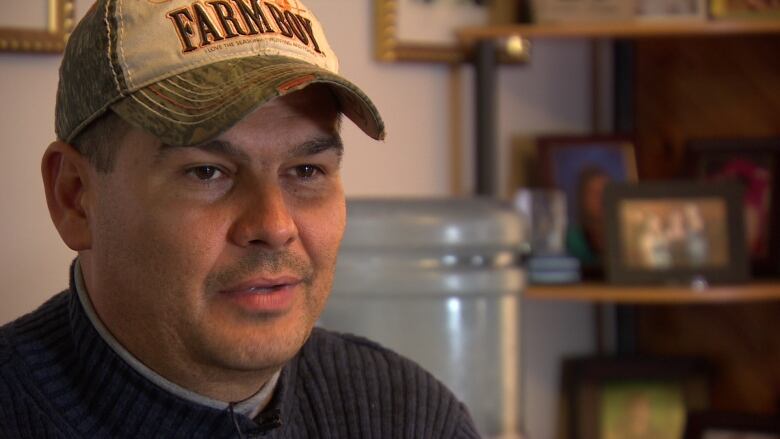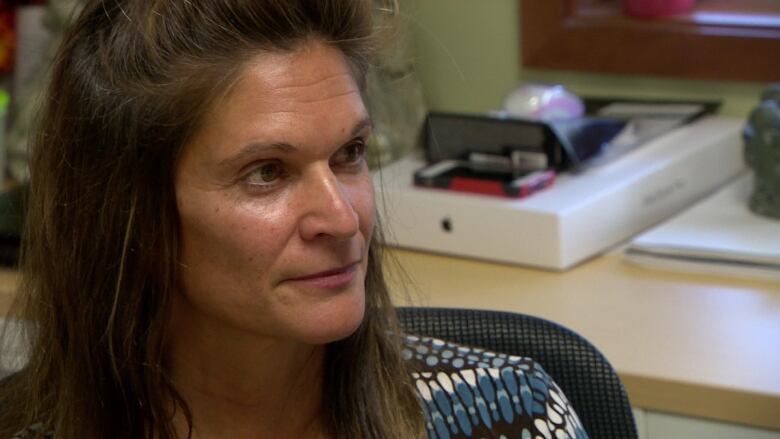Drinking water advisories hit more than half of Manitoba First Nations
32 First Nations have had to rely on water coolers and kettles at least once in last decade
More than half of Manitoba's 63 First Nations communities have been under at least one drinkingwater advisory since 2004, a CBC News analysis ofHealth Canada data has found.
As bad as that may seem, Manitoba's rate of First Nations water advisories is the lowest in Canada.
- Bad water: 'Third World' conditions on First Nations in Canada
- Council of Canadians call on federal party leaders to 'end First Nations water crisis'
Water woes are worse in some communities than in others.God's Lake First Nation tops the list with a total of 3,552 days nearly a decade with water problems.
Pinaymootang First Nation comes second with 859 days.Little Grand Rapids andHollow Water both logged more than600 days.
A drinking water advisory can affect as little as one building. It does not always represent a problem with the entire water system in the community, according to the Health Canada website.

In Pinaymootang, 220 kilometresnorth of Winnipeg, outside the water treatment plant there's a constant slow-moving parade of people lugging heavy water coolers out ot their cars.It's not uncommon to see some cars withas many as a dozen massive water jugs.
Pinaymootang band Coun.Derrick Gould relies on bottled water from the community's treatment plant for drinking water and food preparation.People there just don't trust the water from their taps, he said.
Gould bathes in the water that runs from his tap but saidhe sometimes adds a little bleachto his bathwater "just to try and kill whatever is there."
Water coolers replace tap water
Pinaymootang'shealth director, Gwen Traverse, noticed a big shift when she moved back to the First Nation after living away for several years.
"Growing up,we used to always drink from the tap.And then coming back to the community,I noticed that every house has water coolers," she said.

Traverse saidthe community needs more resources to police and treat its water. She said$15,000 isn't enough to run the water testing program, and it's getting harder.
"I find that standards are different even to the next community that's even five, 10minutes away. Standards are totally different compared to on reserves," said Traverse.
Toxicologist Lalita Bharadwaj, aUniversity of Saskatchewan professorwho researches water regulation challenges facing First Nations communities and the impacts those challenges have on health,says more communication and collaboration is needed to improve water on First Nations.
Ambiguity muddies the water
"When you have this sort of complex tri-departmental structure for managing and governing water, you are going to run into issues of communication, overlap of roles and just ambiguity of just what each other's roles are in that delivery of safe drinking water."

Bharadwaj saidit could be because there is more testing of more water sources,but it could also be "because systems are becoming old and aged and not working properly. It could be because the source water is getting harder to treat.
"It's really hard to say why these numbers are higher, because there's so many reasons why a boil water advisory could be put in place," Bharadwaj added.
Whatever the reason, the Council ofCanadians says the increase in advisoriesis unacceptable.
"The numbers are quite appalling," saidEmma Lui, the council's national water campaigner.
"It was quite striking to see that there were a number of communities that had been under a do-not-consume orderor a boil-water advisory for close to 20years, and so it's quite shocking."
Lui says she hopes it prompts commitments and action from the next federal government.
With files from Tiar Wilson, Holly Moore, Joanne Levasseur and Vera-Lynn Kubinec















_(720p).jpg)


 OFFICIAL HD MUSIC VIDEO.jpg)
.jpg)



























































































